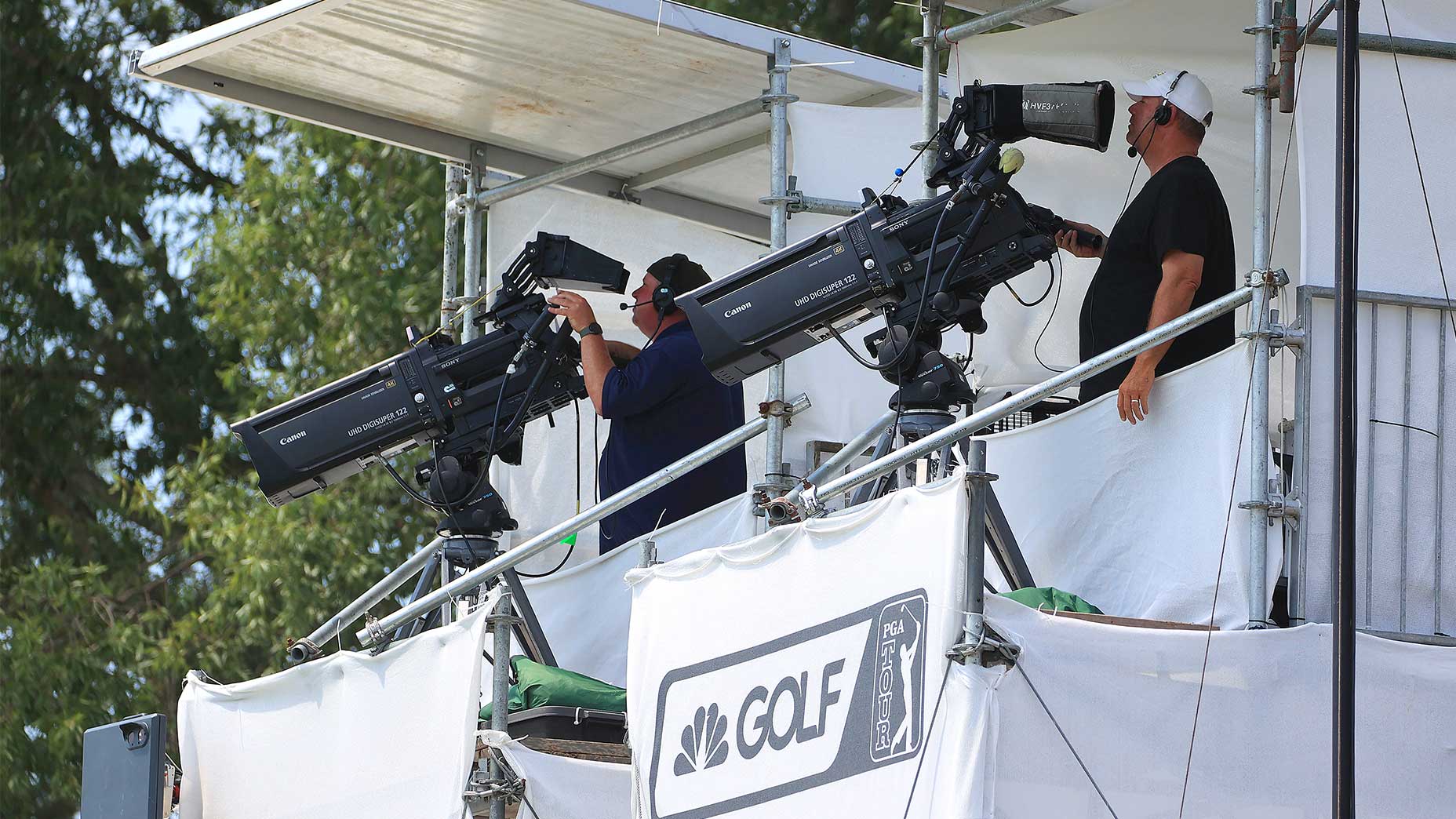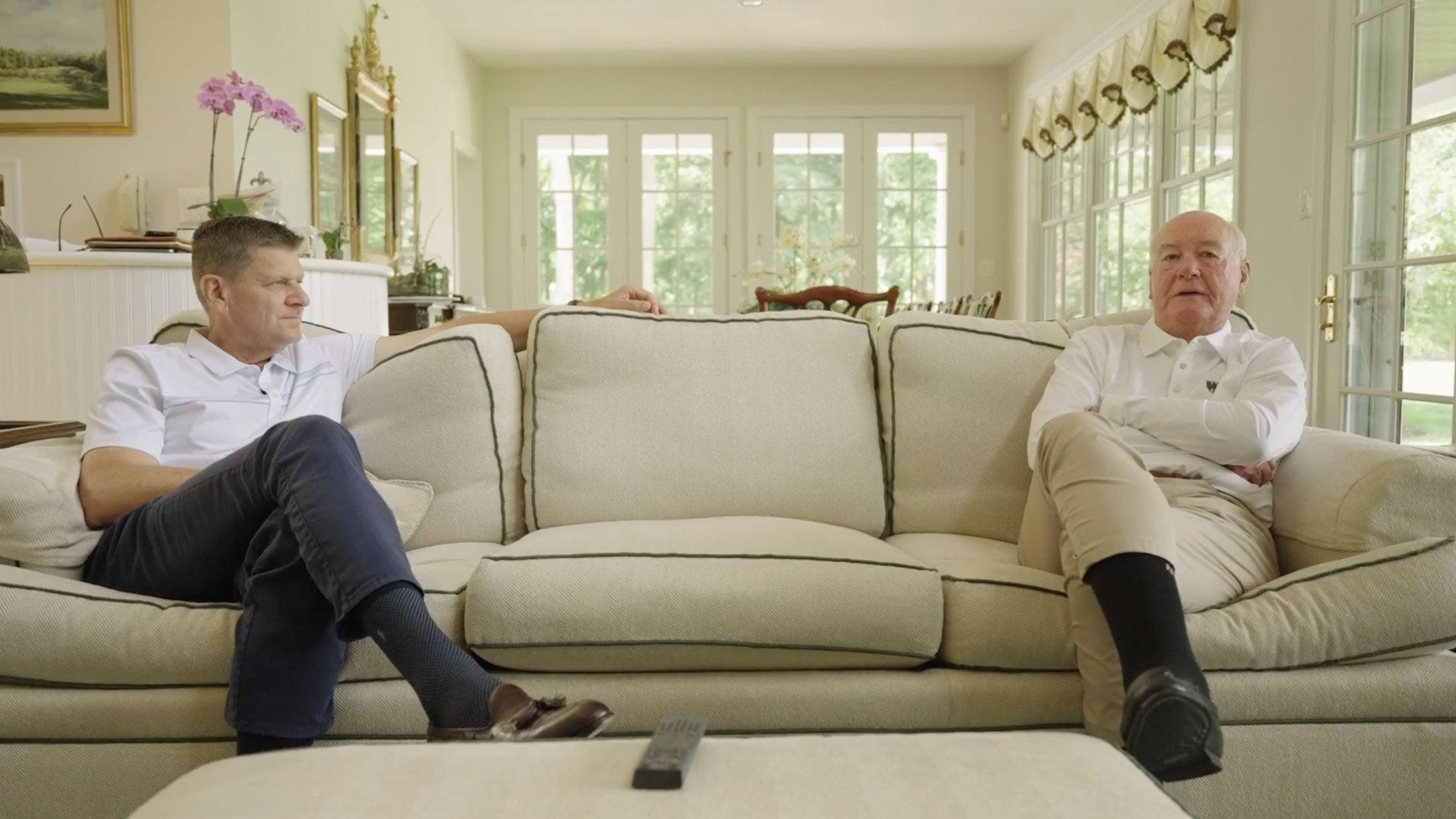News
Did LPGA capitalize on women’s sports boom? Or did it fall short?
Did the LPGA capitalize on the women’s sports boom? At this week’s CME Group Tour Championship, its stars answered that question.Tour Confidential: Rory’s big win, Ryder Cup money, LPGA rivalry
GOLF’s editors discuss Rory McIlroy’s latest win, a potential Ryder Cup payment structure and more in Tour Confidential.Tour Confidential: PGA Tour changes and the great Bernhard Langer
GOLF’s editors and writers discuss potential PGA Tour changes, the great Bernhard Langer and more in the latest Tour Confidential.Tour Confidential: Ryder Cup player pay, biggest PGA Tour change, Tour-PIF news
GOLF’s editors discuss potential Ryder Cup player stipends, the biggest proposed PGA Tour change and more in Tour Confidential.Tour Confidential: TGL’s TV schedule, Tiger’s next start and more
GOLF’s editors discuss the TGL’s TV schedule announcement, the Hero World Challenge field, Justin Thomas’ latest disappointment and more.Tour Confidential: Ryder Cup outrage, LPGA Player of Year, LIV leadership
GOLF’s editors discuss the Ryder Cup ticket controversy, LPGA Player of the Year race and a reported shakeup coming to LIV Golf’s C-suite.Tour Confidential: Rory’s merger outlook, Ryder Cup learnings and more
GOLF’s editors discuss Rory McIlroy’s merger assessment, some new learnings for the 2025 Ryder Cup, PGA Tour venue selections and more.Tour Confidential: The status of golf’s merger, Korn Ferry Tour grads and more
GOLF’s editors discuss the status of pro golf’s merger, the most recent Korn Ferry Tour grads, and a player turning down a Masters invite.Rory’s tearful finale, Nelly’s surprise, a ‘ridiculous’ slow-play fix | Monday Finish
Nelly Korda’s comeback, Rory McIlroy’s finale, Charley Hull’s wild slow-play fix and more — all in the Monday Finish.A shocking PGA Tour grad, Dahmen’s chase, golf’s Trump question | Monday Finish
After a breakthrough win the PGA Tour welcomes a surprising rookie. Here’s who else is vying for Tour cards, plus (limited) politics talk.Rory’s new doc, Tour tweaks, election distractions | Monday Finish
The TGL’s docuseries raises questions, so do the PGA Tour’s changes, Charley Hull is back, we’ve got election distractions and more.Norman’s LIV admission, Caitlin Clark’s new coach | Monday Finish
Greg Norman offers insight into LIV’s challenges, Caitlin Clark battles her slice, Ryder Cup reports cause a stir — all in the Monday Finish.LIV’s next targets, 1 inspiring winner, selling the Ryder Cup?! | Monday Finish
One golfer’s inspiring win. New hints on LIV players. And forget $750 tickets; could the Ryder Cup itself get sold? More in the Monday Finish.The PGA Tour added Utah. These 5 states should come next | Monday Finish
The PGA Tour’s biggest missing pieces, a new lefty golfer has arrived, Ryder Cup drama continues and more in this week’s Monday Finish.Rory dishes on LIV, Ryder Cupper returns, Augusta in ‘recovery mode’ | Monday Finish
One Ryder Cupper battled back, Augusta National is helping and Rory McIlroy analyzed the Jay Monahan-Yasir Al-Rumayyan St. Andrews summit.Paul Azinger announces surprise return to golf broadcasting
Paul Azinger will take over the lead analyst role again, this time for coverage of the PGA Tour Champions circuit.LPGA shifts broadcast plans for Caitlin Clark pro-am appearance
The LPGA changed its broadcast plans for next week’s The Annika in order to fit an extended window with star WNBA player Caitlin Clark.6 key lessons from Good Good Golf’s YouTube success
A recent interview with Good Good Golf revealed a few key lessons to the brand’s success on YouTube and beyond.Good Good critiques PGA Tour’s Creator Classic ‘miss’
Good Good Golf critiqued the PGA Tour’s approach to the first Creator Classic in an interview with the Colin and Samir Show, and hinted at a deal with Peacock.What’s Golf Channel’s NBC future? Comcast announcement raises questions
Comcast’s announcement that it was exploring a spinoff of its cable TV assets leaves questions about the Golf Channel.What Greg Norman’s ominous words about LIV TV contracts really mean
In a rare interview, Greg Norman pointed to LIV’s broadcast “headwinds” as one of the league’s few failures. But what does that really mean?Have golf TV feedback? The PGA Tour wants to hear from you (!)
Do you watch golf on television? Do you have strong feelings about it? The PGA Tour wants to hear from you with an interesting new survey.What if this baseball great had played golf instead? We asked him
What would Mike Schmidt’s life have looked like if he had applied his talents to golf before baseball? Michael Bamberger asked him.Mike Schmidt is a baseball legend. But he’s consumed by golf
After Hall of Famer Mike Schmidt ended his 18-year baseball career, he turned his attention to trying to master another sport.This secret golf legend’s legacy runs deep in the game. Ask Callaway’s boss
O. Gordon Brewer played in 42 USGA events and is a former Pine Valley president. He’s also the father of Chip Brewer, Callaway’s CEO.Padraig Harrington: This sneaky putting hack tells you where to aim
Unsure about where to aim while putting? Three-time major champ Padraig Harrington shares a sneaky hack that helps find the right line.Why playing ‘wild golf’ will make you better, according to Padraig Harrington
On the latest episode of GOLF Originals with Michael Bamberger, Padraig Harrington delivered some sage game-improvement advice.Padraig Harrington is a serial truth teller. Ask his pro-am partners | GOLF Originals
Padraig Harrington is all in on every practice swing, every swing swing, every word out of his mouth. And he wants to make you better.Why there’s less ‘bravado’ in pro golf today, according to Brandel Chamblee
The current era of pro golf sure is different from the past, and Brandel Chamblee thinks it’s created more risk-averse players.2024 RSM Classic Friday tee times: Round 2 groupings
Full 2024 RSM Classic tee times for Friday’s second round at Sea Island, featuring Maverick McNealy, Keith Mitchell and more.Why this top-20 player’s best season hasn’t derailed her retirement plans
Despite posting her highest-ever earnings and six top-10 finishes, Ally Ewing said her recent play has only reinforced her decision to retire.2024 RSM Classic Thursday TV coverage, streaming: How to watch Round 1
How to watch the 2024 RSM Classic on Thursday, including full Thursday TV coverage and streaming info for Round 1 at Sea Island.My nephew is looking to break 80. So I asked Nelly Korda for 1 tip
Nelly Korda was asked by the author: What’s one tip to help my nephew break 80? She answered at the CME Group Tour Championship.Did LPGA capitalize on women’s sports boom? Or did it fall short?
Did the LPGA capitalize on the women’s sports boom? At this week’s CME Group Tour Championship, its stars answered that question.Lydia Ko explains how getting a dog changed her perspective on golf
At this week’s CME Group Tour Championship, Lydia Ko explained the effect her new furry family member has had on her life.LPGA’s 2025 tournament schedule features record-breaking purse size
On Wednesday, the LPGA revealed it 2025 tour schedule: 35 events featuring a $131 million purse — the largest total ever.
Join InsideGOLF today!
GOLF.com’s membership program is one of the game’s best values. For only $39.99/year, you’ll get access to exclusive content and also a host of discounts and promotions, including…
- Dozen Srixon Z-STAR XV Golf Balls (+$45 retail value)
- $20 Instant Credit at Fairway Jockey
- One Year (8 issues) of Golf Magazine (+$79 Newsstand value) – U.S. members Only
- +600 Issue Golf Magazine Digital Archive (1959-Present)
- Bucket-List golf trips and experiences
- FREE True Spec Fitting with any club purchase
- $100 OFF qualified purchases at Miura and Fairway Jockey
- 50% OFF new Golf Logix App/membership
- Plus so much more!





































